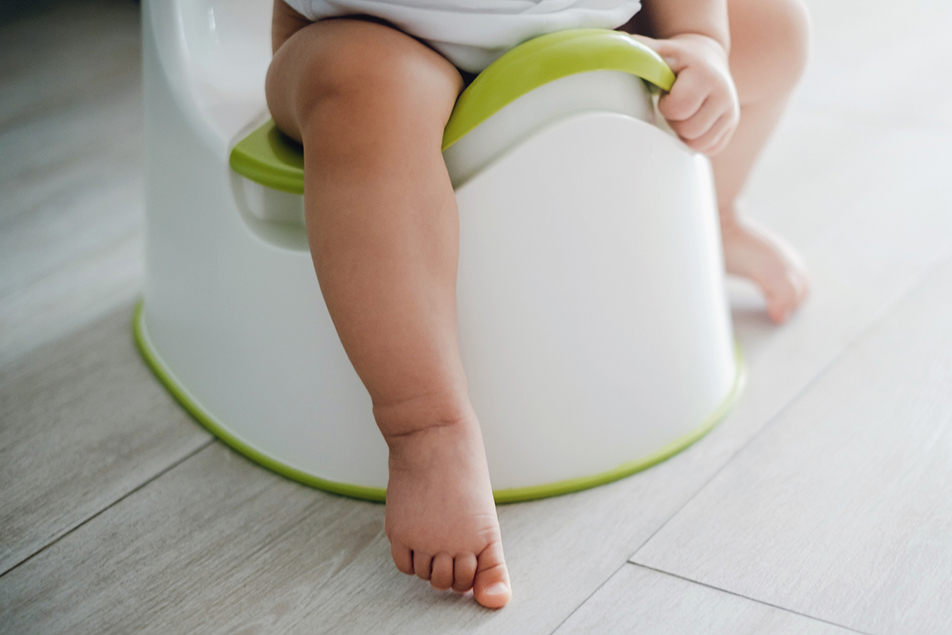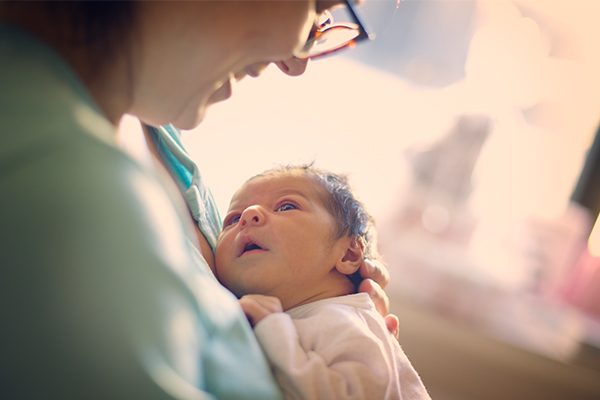
This post was written by Greshma George, MD, PPG – Pediatrics.
Potty training is an important milestone for both children and caregivers alike. This developmental achievement is a leap towards independence and self-sufficiency for the child as they learn to recognize their body’s signals and master using the toilet. For parents and caregivers, it means freedom from diapers while also navigating new situations like bathroom proximity and accidents.
When to start
Ideally, parents and caregivers should start potty training as soon as their child shows signs of readiness. But there is no definite or right answer when it comes to potty training because it can widely vary based on gender and cultural differences. The ability to control bowel and bladder muscles comes with proper growth and development. And, while there is no set age or timeline, pediatricians generally start discussing the possibility of initiating the process around 18-24 months of age.
Signs of readiness
Before delving into the process, remember, everyone (child and caregiver) must be ready for potty training. Rather than focusing on a child’s age, caregivers should base toilet training readiness on a child’s physiologic, developmental and behavioral milestones. If you’re unsure as to whether your child has reached this pivotal potty training moment, try watching for the following developmental signs:
- Walks to the toilet
- Sits up on the toilet
- Stays dry for several hours
- Wakes up dry after a nap
- Pulls clothes up and down
- Follows simple instructions
- Communicates the need to go to the toilet
- Demonstrates independence by saying “no”
- Shows interest in toilet training
- Expresses a desire to please (gives gifts, enjoys praise)
- Imitates adults and older children
As previously mentioned, caregivers should also be ready and in the right mindset before initiating potty training. At least one parent or caregiver must have enough time, and energy, to toilet train daily for at least three months. This usually entails positive reinforcement, preparing for and dealing with accidents, and doing additional laundry. It may also be wise to consider delaying any toilet training if you are preparing for a new child, moving to a new home, returning to work or if your child is entering daycare. Making too many changes at once can make toilet training more difficult, increasing the chances of experiencing frustration and setbacks.
Various methods
Just as there isn’t a set age to begin the potty training journey, there also isn’t one right way. There are several methods parents and caregivers can choose from as they approach toilet training with their children. The two main techniques widely accepted and supported by the American Academy of Pediatrics are the child-oriented approach and the parent-oriented approach or the “toilet-train-in-a day” method proposed by Azrin and Foxx. Let’s take a closer look at each one:
- Child-oriented approach: This method is more relaxed and emphasizes the importance of the child’s interest in toilet training, attempting to minimize the stress and demands surrounding the process. Children are introduced to a potty chair and gradually progress from simply sitting on it to using it appropriately with the encouragement of positive reinforcement. This method could take a few months or a couple of years, depending on the child.
- Parent-oriented approach: This method involves an intense period of instruction designed to achieve continence in 24-48 hours. Typically, training happens in one room and generally begins with a doll that can wet in the potty to demonstrate toileting actions. Then, caregivers walk the child through the same motions and provide large amounts of liquids to induce frequent urination. During this process, they are also frequently reminded and checked for dryness every 3-5 minutes with positive reinforcements like praise, toys or food for successful toileting behaviors.
Additionally, it’s important to remember that everyone is unique, and comparing your child to another will only bring out frustration and anger. It’s important to be patient. Potty training doesn’t happen instantly. It could take anywhere from days to months.
Positive preparation
When preparing your child for potty training, it’s best to use a set of fixed words for bodily fluids and stay consistent with them. Switching back and forth will confuse your child while hindering the process and their progress. It may also be helpful to purchase a cute potty chair. In many cases, a potty chair is easier for children to use than an over-the-toilet seat while providing the appropriate leverage for elimination. Also, don’t be afraid to encourage your child to take ownership of the chair by decorating and even labeling it with their name.
As your child becomes more acquainted with the idea of the potty chair, try letting them sit on it fully dressed while looking at books or playing with toys. This will allow them to acclimate and become even more comfortable with the toilet and training process. Then, after a week of sitting on the potty fully clothed, try encouraging them to sit on the chair naked. Finally, to help make the connection between elimination and the potty chair, try placing a soiled diaper or stool in the potty and explain to the child that this is the purpose of the chair.
Once established, you can demonstrate the disposal of feces or urine into the “adult” toilet by making them say “bye-bye” to pieces of toilet paper. Eventually, you can slowly transition to training pants or cotton underwear and out of diapers but remember there is no need to rush. It’s crucial everyone stay positive, keep practicing and continue to encourage the child throughout the process.
Potty training dos and don’ts
As you and your child progress fully into toilet training, be sure to consider a few of these helpful tips:
Dos
- Adopt a positive and loving approach to toilet training
- Keep your child in loose, easy-to-remove clothing (not too many buttons, clasps or snaps)
- Make the potty chair easily accessible (in a playroom, downstairs bathroom, etc.)
- Teach boys how to urinate while sitting down first
- Make sure your child consumes plenty of water and fiber-rich foods
- Night and naptime training should wait until your child is consistently dry during the day
- If your child is not making progress, discontinue training for two to three months
- Remember that accidents will happen
- Stay calm – you’ll find that your child will relax too
Don’ts
- Don’t fight over toilet training – it is a battle you will lose
- Avoid flushing the toilet while the child is on it – it will scare them
- Never discourage, tease or punish your child when potty training
- Avoid over-reminders
Final thoughts
Please remember that potty training is not a competition. Success with toilet training does not mean that your child is brighter or more advanced than other kids. With that said, having trouble with toilet training or beginning later does not mean that your child is lazy, stubborn or a slow learner. Remember, accidents will happen, but time and patience are key components to successfully walking the potty training path.



